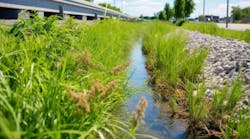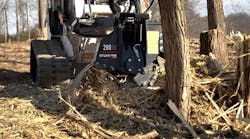Hurricane Dorian (technically now a “post-tropical cyclone”) has finally headed into the open Atlantic off the Canadian coast. The official death toll in the Bahamas is 45 (although it is expected to rise), with at least 5 deaths in the Southeastern US and one in Puerto Rico attributed to the storm as well. Images and videos of the destruction aren’t hard to find—photos of destroyed homes, flooded neighborhoods, displaced people, and washed out roads are everywhere
Late last week, the Washington Post published an article showcasing Dorian’s aftermath in the Bahamas from a perspective I hadn’t seen; it features large satellite images of the islands of Grand Bahama and Great Abaco before and after the hurricane hit. Seen from above, there is plenty to notice—buildings flattened, roads washed out, floating docks disappeared. But for the erosion-minded among us, there are other things to note as well.
The first thing I looked for was vegetation along the coastlines. In the before images, many of the islands’ beaches have just a narrow strip of sand and are lined with bushy vegetation. In the after images, the vegetation has disappeared. In some cases, that means the amount of white sand visible has almost doubled. In other cases, sand and vegetation has been so washed out, roads and seawalls are directly bordered by the ocean. But even looking a little inland, it’s clear that much of the vegetation was blown away or flattened by the wind and the rain.
Another effect of Dorian can be seen in the water. The hurricane stirred up sand and sediment in the water around the islands, making the water appear bright and murky in the satellite images. It’s also possible to see muddy trails of runoff near the shoreline leading into the sea.
Where most images focus on the human scale destruction—the loss of property, the displacement, the loss of life—the WaPo images show the macro-scale aftermath. In our efforts to better prepare for future storms, understanding the devastating effects of hurricanes on residents and survivors are certainly important. For better or worse, the human devastation is a heart-wrenching motivation to make communities more resilient. But that zoomed out, macro view is important too—what do hurricanes like Dorian do to the land and the ocean? What kinds of shoreline protection work? How can we keep vegetation, soils, and sediments on the ground and out of bodies of water?
What kinds of measures do you think are most effective in protecting shorelines and shore-front buildings from erosion during hurricanes? If you have experience with hurricanes or post-hurricane erosion remediation, we want to hear from you. Send your experiences, comments, and thoughts to rsim@endeavorb2b.com.






